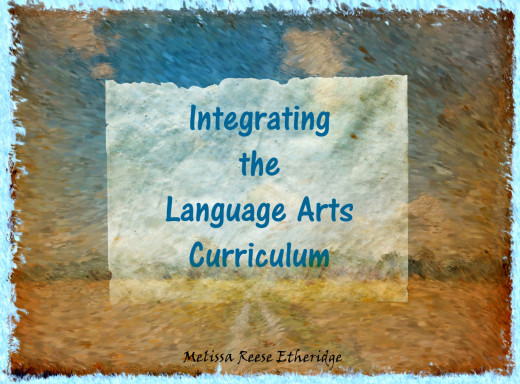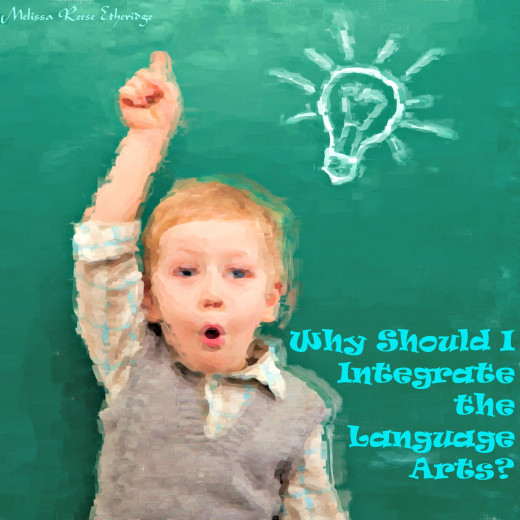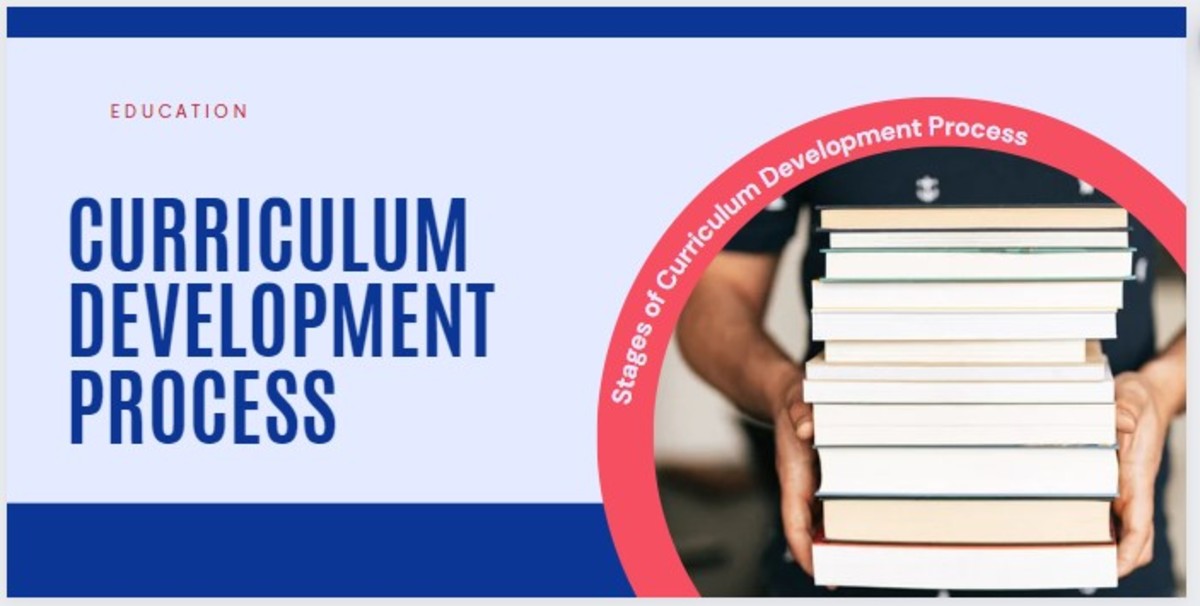Integrating the Language Arts Curriculum

What is Language Arts Integration?
Integrating the Language Arts means that all of the basic components of Language Arts are taught together. The basic components of Language Arts are reading literature, reading informational text, and writing, researching, thinking critically, speaking, and listening. True integration means that students read and write in real communication settings.
Here is an example. On the first day of school, I give students a letter from me to them. The students’ first writing assignment is to write a letter to me using my letter as an introduction. This is an example of real-life writing: writing to introduce yourself.
Basically, the Language Arts are a set of tools to help students explore other subjects. Integration also means teaching reading and writing in other subjects like science, social studies, and health.

Why Integrate the Language Arts?
As English teachers, we have a unique responsibility: to assist students in their growth toward language maturity. Specifically, our challenge is to help students read, write, speak, and listen capably and efficiently. To the extent we are successful in meeting this challenge, students learn to think critically and imaginatively.
Reading, writing, speaking, and listening are complementary processes. That is; growth in one enhances growth in the other. Want students to achieve both well-developed oral skills, speaking and listening to competence, and literacy, reading and writing ability, and each feeds the other. Our curriculum, therefore, should function to give students opportunities for total language growth. Students are encouraged to read and write more if given the chance to work with others.
We must lead students toward a recognition of the interdependence of all language processes. Students can then become truly competent readers, writers, speakers, and listeners. The process works much like learning to drive a car.
How Can We Integrate the Language Arts?
One conception of the English curriculum is that it is about literature—in both print and nonprint forms and that it is about experience. The world of literature and the world of students; experience must be drawn together if the English classroom is to be an exciting, dynamic place. When we as teachers attempt to bring these two world together, we create conditions for integrating the language arts.
For example, a poet may write about a sunset. Students write about an evening or read an informational text about sunsets before reading the poem. We might relate an experience or two of our own. Afterward, when students approach the poem, they have established a mindset for reading it, and they are potentially able to relate to it in particular ways. Upon finishing the song, they might talk in groups about how the poem is different from or similar to their experiences. Or they may be invited to make journal entries. Such discussions or personal reflections in journals may lead to a full, even formal, piece of writing on some interesting aspect of the poem, perhaps drafted several times and finally released to the teacher. In these ways, students practice reading, writing, speaking, and listening to clarify and to enhance their thoughts and feelings about a literary experience.
The Benefits of Integrating the Language Arts
They develop a sense of community as they talk together, share perceptions from their reading and respond to each other’s written drafts. Most importantly, they grow toward full language maturity, recognizing that each language process contributes to the development of all others. Finally, they become better thinkers, a primary goal of all instruction.
Creating a Thematic Unit
Creating thematic units are one way to integrate the Language Arts. Sometimes, these units are called literature-based units. There are many values in teaching a literature-based unit. One benefit is that issues of personal and social significance are more useful and relevant than practicing skills in isolation. A second benefit is that students are given both time and opportunity to pursue subject areas of special interest. A third benefit is that students are given choice. Also, students use all language forms in their investigation and their published pieces. Students become aware of the need to move across curricular boundaries to solve problems. And last but definitely not least, students’ brains work more effectively when connections ae made across the curriculum.
When selecting a theme, teachers must take into account what the students’ interests are, what the federal, state, and local curriculum mandates are, students’ developmental needs are, and what is being taught in science, social studies, and health. There should be some tension in the themes so that students can explore the topic thoroughly. Here are some ideas that my colleagues and I have used successfully over the years:
· Helping those with special needs
· Getting to know you/getting to know myself
· Character, ethics, morals, and beliefs
· Looking into the future
· Why history matters
· Scientific discoveries that help people
· Why are parks and public lands important?
· The Harlem Renaissance
· Literary criticism
· Mythology
· Oral history
· This is your brain on exercise
· Ancient civilizations
· Holidays around the world
· Disaster, Catastrophe, and Calamity
· Japanese-American internment
· Women’s Suffrage Movement
Typically, the unifying framework will be found in science, social studies, and health. When planning a thematic unit, I always check the Language Arts standards and the content-area standards. I also think about themes that incorporate a wide array of text and media.

Integrating the Language Arts with the content area subjects does not mean more work for the Language Arts teacher. Rather, it is an opportunity to explore content-rich topics in a variety of ways that makes the subject more interesting and not isolated.

Melissa teaches humanities at a public school in Tennessee. She is an avid reader, writer, and kayaker.







